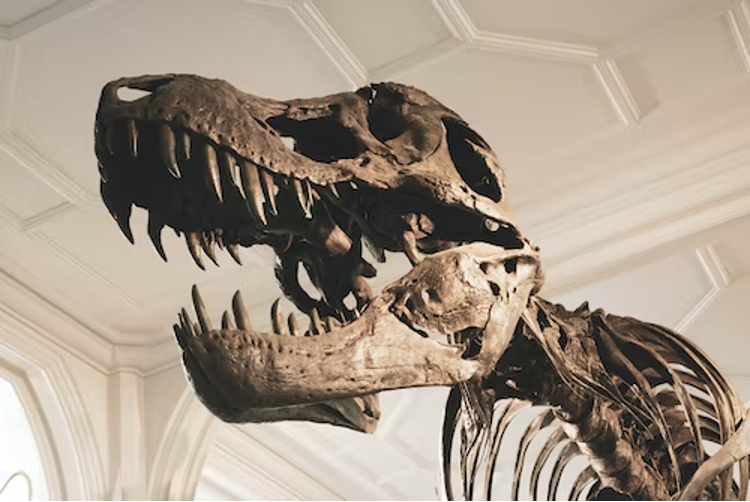EcoPerspectives Blog
Potentially Colassal Mistake: The Environmental Ramifications of De-Extinction
By Nicholas Govostes, Staff Editor for the Vermont Journal of Environmental Law
May 2, 2023

Cutting edge company attempts de-extinction of lost species for scientific and financial gain - sound familiar? Maybe six movies and several books describing this exact process, the end result, and the subsequent fallout ring a bell? For the non-movie buffs, the Jurassic Park franchise is one of the most profitable and well-known movie franchises of all time, dating back to the first Jurassic Park movie released in 1993. Since then, the franchise has generated millions of dollars from movies, games, and toys and has captured the imagination of several generations. Also, the franchise (theoretically) serves as a warning to those who considered meddling with the forces of nature and genetics”playing God” so to speak. Unfortunately, it would seem that warning has fallen on deaf ears, particularly those of Colossal Biosciences’ founders and investors.
Colossal Biosciences is a biotech startup based out of Dallas whose mission is to use genetic technology to “de-extinct” previously lost species. While striving to make Earth healthier, Colossal is also aiming to develop new technology and software from this process that can completely revolutionize the science of genomics and provide new avenues for addressing economic concerns and biological conditions. A lofty goal to say the least. To this point, three species are on their de-extinction agenda: the thylacine (Tasmanian tiger), the wooly mammoth, and more recently, the dodo bird. The company has notable investors including life coach and motivational speaker Tony Robbins and billionaire film producer Thomas Tull. They also have institutional partnerships with top universities like Harvard and Cornell, among others. Colossal is currently seeking investors for the dodo bird project, but the estimated $1 billion company seems well on its way to make that project a reality.
To justify this project on the “rewilding” front (the reintroduction of lost species into their natural habitats), Colossal cites to the Yellowstone Wolf Project as proof that such projects can be successful. For context, in the early 1900s, wolf populations in Yellowstone National Park had been virtually eradicated by hunters and the U.S. government. The removal of wolves, along with bears, cougars, and other predators, led to a cascade effect where the elk population grew out of control. As a result, vegetation became more scarce, which caused further harm to other species like beavers and fish. The park lost a keystone species and the food web felt the effects. In 1995, the Yellowstone Wolf Project reintroduced wolf populations into the park. The impacts of the wolves were felt immediately, as elk numbers were quickly brought under control, impaired species were able to bounce back, and the ecosystem became healthier than it had been in decades.
The Yellowstone Wolf Project was a success and premier example of how rewilding can work, but the comparison to Colossal’s project feels misplaced. For one, Yellowstone needed the wolves to bring the ecosystem into balance, whereas here there is no tangible benefit to introducing an old species back into its “old” environment – no ecosystem requires the Tasmanian tiger, wooly mammoth, or dodo bird to bring it back into balance. Although certainly remarkable to see the species returned to well being alive, rewilding them would only serve to add another mouth to feed into the food chain of the respective ecosystem, putting pressure on the other species already present. The “new” members of the ecosystem could potentially push food sources to a breaking point and even drive other species to extinction. Also, there is no guarantee a species like the wooly mammoth (gone for roughly 3,700 years) or dodo bird (gone since approximately 1690) would adapt to their new living conditions, particularly in the face of climate change.
While rewilding is presumably not the sole purpose of Colossal’s project, it will be worth monitoring the project going forward to see just how serious they are about reintroducing lost species into their old environments, as well as how quickly they choose to do so. Developing new technology and software for the good of mankind is a noble goal, but the means in which we do so are equally important to consider. By the looks of things, Colossal appears more concerned with the benefits that can be derived from the technology developed for the de-extinction process, not the actual revival of the extinct species. In the words of Dr. Ian Malcolm (Jeff Goldbloom): “[Y]our scientists were so preoccupied with whether or not they could that they didn’t stop to think if they should.” Colossal has no trouble thinking that they could de-extinct their selected species. But perhaps they need to rethink whether they should.

